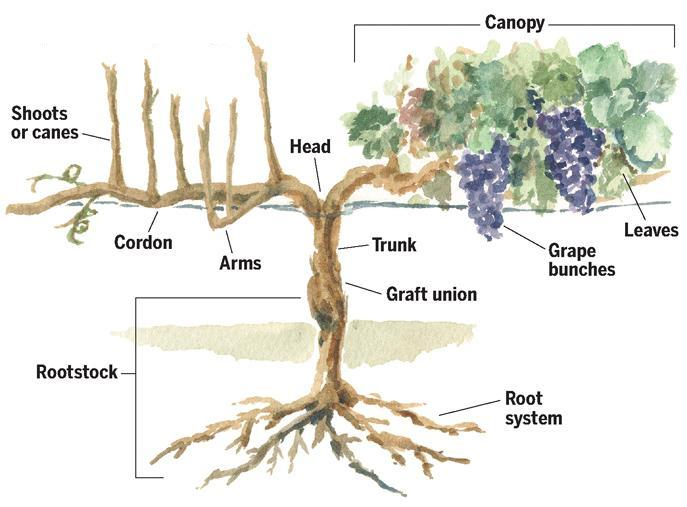We seem to be facing a chicken vs. egg issue. We are trying to finalize our label and our brand logo. But in order to do this, we need to have the specifications for the labels. We need to decide on paper stock, color, design ideas, label size and shape but in order to do this, we need to know what we want our label to look like. It is quite the conundrum. We need to know our label design to decide on an appropriate label, yet we need to find an appropriate label to finalize our design. I am constantly amazed by how many little decisions you must make in the process of starting a winery- which I am sure are the same issues anyone starting a business faces.
From Mike’s and my experiences at Unilever, we are very familiar with the many steps that it takes to get a product on the store shelf. People always are intrigued when we discuss how many steps there are to get a product in the store. The many variables created in the lab to come up with a few to go to product research. Yet, when you get that call from a research survey company, you are helping the company finalize a product. On average, a corporation can take around 9 to 12 months to have a product go from idea conception to finished product on shelf, and the majority of concepts never even make it to the store. Once a product formula is finalized, the company pays per SKU to get in the individual stores. Depending on where the company wants the product to be placed, they pay a fee. Eye level shelves cost more than low level shelves. Those end aisle displays that change weekly- BIG BUCKS!
Mike and I are very aware of these multiple steps and decisions that need to be made for a product to be ready to be sold, but for some reason, I did not think about that when we began making our own product. The decisions are plentiful and making them are stressful. Every time we sit down to discuss one of the issues it is nerve racking. We know that these decisions can help sell our wine and that makes us a little nervous to make final decisions.
In the Forbes article, The Psychology of Wine Labels, it is explained that many people purchase by the label. Even more than the picture, the wording can have an influential impact on the consumer. “a carefully crafted label can make us think the bottle is way more expensive than it is, and it can boost our enjoyment of the wine itself.”
That is a large percentage of people who are willing to try a wine simply because they like the label. In turn, that puts a lot of stress on us to create a label that will attract customers. One trend we know is that animals on labels have a draw. In fact, there is something called the “Critter Rule.” Research published by Wine in Provence states:
In the wine industry these animal labels are affectionately known as “critter labels”, and the trend began back in 2001 with the introduction of the Yellow Tail brand of wines into this country from Australia. These wines had labels that looked striking, were priced very reasonably and they tasted great- so they became a runaway success. So much so that they spawned an entire new “category” of wine.
The ACNielsen study has some hard data confirming the popularity of this new wine category. In the past three years there have been 438 new Table Wine brands that have been successfully introduced in the American market (those wines that sold more than $20,000 annually). Of these 438 new brands 77 of them featured an animal on their label, around 18 percent. Combined with existing “critter label” wines, sales reached $600 million in 2005 out of a total of just over $4 billion, based on ACNielsen sales data from supermarket point of sale purchases.
According to Trends in Wine Labeling studies indicate that a wine label has only 3 seconds to grab a buyer’s attention, and many market-savvy wineries are responding by targeting specific demographic groups with their labels. The largest wine-drinking demographic, the Millennial generation (under 35s), likes fun, energetic, colorful or provocative labels, so we’re seeing more labels featuring animals (“critter wines”), labels with quirky names (“Fat Bastard”) and labels with modern, contemporary artwork. Baby Boomers, on the other hand, are likely to be attracted by more conservative labels (pictures of chateaus or vineyards) as well as labels with legible typography with larger fonts because of their failing eyesight.
After researching the trends, and having received some sample labels, we can no move ahead and agree to label dye lines, and finalize the label design and the paper stock. I will feel so much better and feel like a huge weight will be lifted off my shoulders when we can conquer this hurdle. Once we finalize, we then of course need the government to approve it also. But that is a different challenge. I hope that sometime in the near future we will be able to introduce our official label and brand logo. And more importantly I hope we will have made the correct decisions that will lead to a label that will make you decide in those 3 seconds to pick up a bottle of 2013 Dracaena Wines Cabernet Franc.
Have you ever picked up a bottle of wine solely on its label? Please leave a comment and tell us about the experience.
~Slainte!

